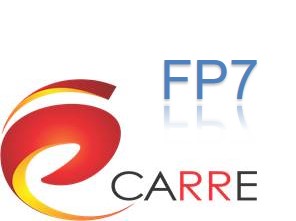
Studies in the mid-1990s based upon firm-level data from thousands of companies suggest that there is a significant payoff from IT investments [1]. These results suggest that investing in IT is on average a positive return on investement (ROI) activity, but the benefits of IT investments are difficult to measure and risk factors can significantly impact the actual ROI realized.
Social return on investment (SROI) is a method for measuring values that are not traditionally reflected in financial statements, including social, economic and environmental factors, which can identify how effectively an organization uses its capital and other resources to create value for the community [2]. While a traditional cost-benefit analysis is used to compare different investments or projects, SROI is used more to evaluate the general progress of certain developments, showing both the financial and social impact of the corporation.
While the approach varies depending on the program that is being evaluated, there are four main elements that are needed to measure SROI:
- Inputs – resources investment in the activity (such as the costs of running a job readiness program)
- Outputs – the direct and tangible products from the activity (for example, the number of people trained)
- Outcomes – the changes to people resulting from the activity (i.e., new jobs, better income, improved quality of life for the individuals; increased taxes and reduced support for the government)
- Impact – the outcome less an estimate of what would have happened anyways (for example, if 20 people got new jobs but 5 of them would have anyways, the impact is based on the 15 people who got jobs as a result of the job readiness program)
The ex-post evaluation [3] of the 7th EU Framework Programme (2007‐2013) published on November 2015 identified major areas of achievement of FP7 framework programme. The following paragraphs address the contribution of CARRE towards each area.
- FP7 encouraged scientific excellence on individual and institutional level. CARRE contributes novel interdisciplinary research in a number of scientific fields. This is demonstrated by the number of scientific publications produced by the project during the first two years: 7 journal papers, 26 papers in conference proceedings, 9 invited presentations. More scientific publications are currently being submitted.
- FP7 engaged industry and SMEs strategically. At the contract phase, CARRE was set up as an academic consortium consisting of 4 Universities, 1 University Hospital and 1 Research Institute. However, during the course of the project, CARRE managed to draw attention and to engage successfully industrial partners, in particular 4 SMEs with activities in the area of sensors and medical IT solutions, and 1 large telecommunications enterprise. Also, other associated partners include 1 non-profit medical research organization on lifestyle medicine, 1 technical university and 3 healthcare providers (as presented in D.8.4). Now, the project is engaging into discussions for the exploitation of research results with the SMEs in the areas of electronic devices, production of control devices and machine vision systems, visual mobile tools and sports medicine, and machine learning and big data analytics.
- FP7 reinforced a new mode of collaboration and an open innovation framework. CARRE involves collaboration of a highly interdisciplinary team, including medical experts, semantic technology scientists, medical device developers, visual analytics scientists and decision support and security experts. Also, all project outcomes are offered as open source software and results and, where appropriate, uploaded onto open innovation portals and frameworks for wide public use.
- FP7 strengthened the European Research Area by catalysing a culture of cooperation and constructing comprehensive networks fit to address thematic challenges. CARRE is a cross-border and cross-sector consortium with a geographical impact covering all corners of the European continent.
- FP7 addressed certain societal challenges through research, technology and innovation. CARRE addresses the societal challenge of personalized health, and in particular the sensitive area of increasing awareness on health risks and managing health risk prediction and prevention. As such, it is a natural predecessor to H2020 calls under the Health Societal challenge. Furthermore, the project exhibits a particular task on gender balances awareness in science and technology, and has demonstrated activities towards a balanced team which have also been communicated as success stories to corresponding bodies such as the IFMBE Committee on Women in Medical and Biological Engineering.
- FP7 encouraged harmonisation of national research and innovation systems and policies. CARRE has clustered with a number of European and national projects with cross-fertilization and results uptake activities.
- Stimulated mobility of researchers across Europe. CARRE team from 4 different countries spanning different European areas (west, north-east and Mediterranean) collaborate actively with a number of working project meetings thus exposing researchers to other European working environments and practices.
- FP7 reached a critical mass of research across the European landscape and worldwide and put research on the public agenda. CARRE research is placed on the sensitive arear of health risk awareness, improvement and prevention. Part of the project outcomes aim at transforming highly scientific information for intuitive use by the general public.
References
- Jeffery, Return on Investment Analysis for e-Business Projects, The Internet Encyclopedia, John Wiley & Sons, Inc, 2004 DOI: 10.1002/047148296X.tie154 http://onlinelibrary.wiley.com/doi/10.1002/047148296X.tie154/abstract
- Millar & Hall (2012) Social Return on Investment (SROI) and Performance Measurement. In Public Management Review, DOI:10.1080/14719037.2012.698857
- O. Fresco, A. Martinuzzi, A. Wiman and the Members of the High Level Expert Group, Ex‐Post‐Evaluation of the 7th EU Framework Programme: (2007‐2013) COMMITMENT and COHERENCE essential ingredients for success in science and innovation, November 2015, accessed on Feb 1, 2016, https://ec.europa.eu/research/evaluations/pdf/fp7_final_evaluation_expert_group_report.pdf






